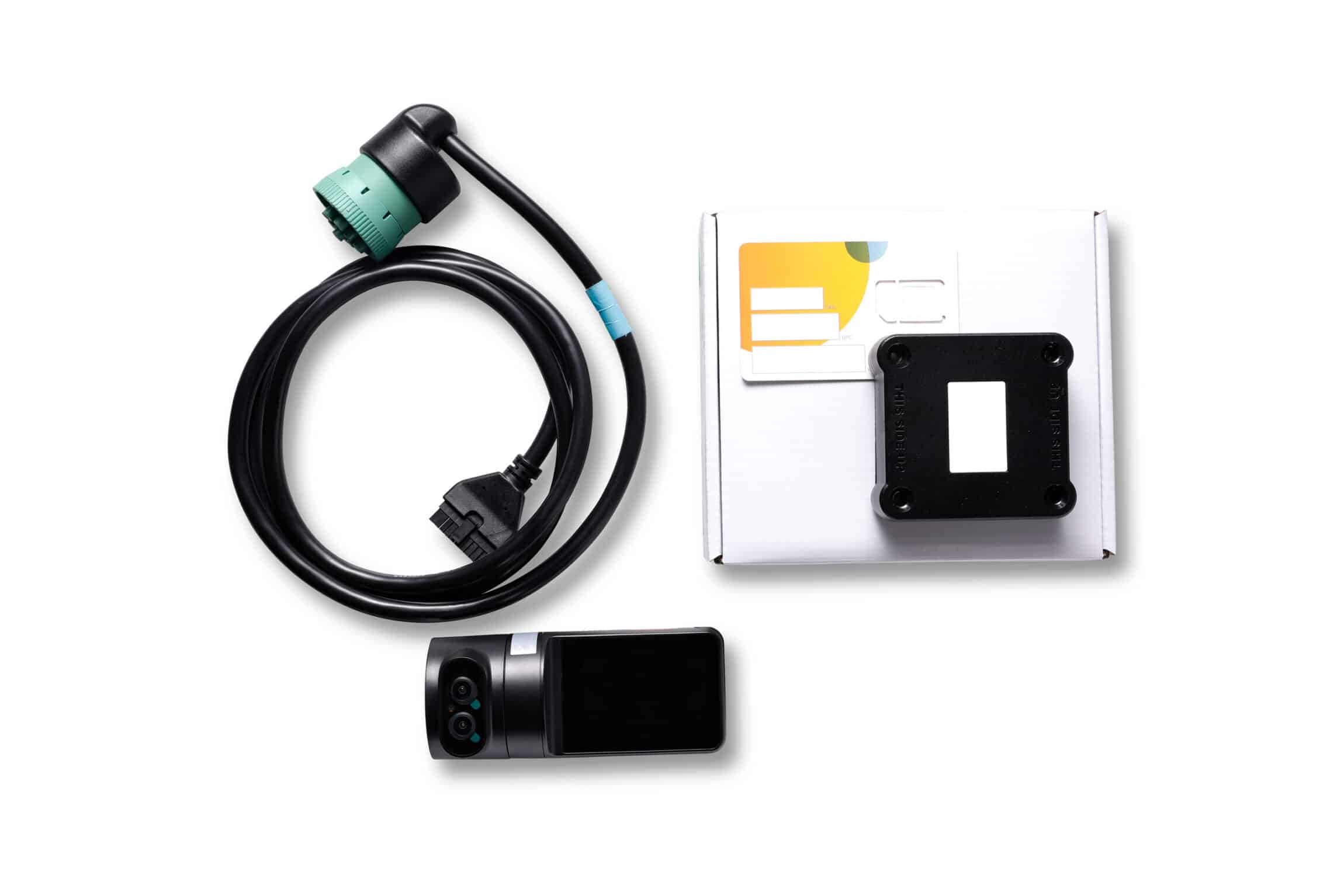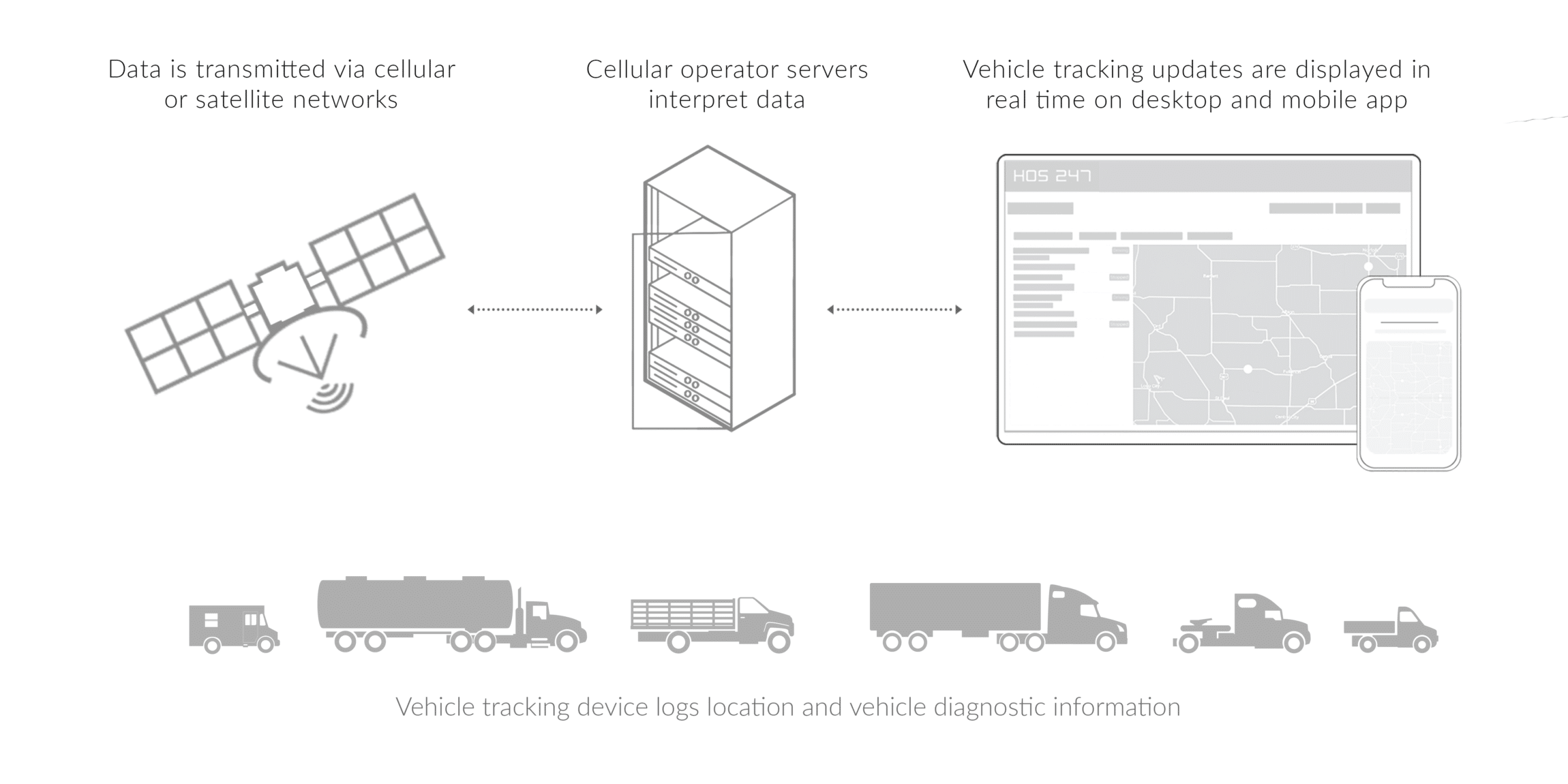Transport Canada hours of service (HOS) regulations are aimed at promoting safety and operational efficiency in the trucking industry. But what do these rules represent, and how do they impact fleet operations? As a driver, failure to comply doesn’t just compromise you legally; it threatens safety, exposes carriers to fines and puts their reputation at risk. For this reason, using a reliable ELD creates a foundation for better performance.
Electronic logging devices have become a must-have for modern fleets. From automating HOS tracking to providing instant data on driving hours, they help drivers and carriers avoid violations and optimize operations.
This article explores the intricacies of Transport Canada hours of service regulations, offering insights for drivers and fleet managers. We’ll break down key rules, analyze common violations, and explain how driver logs can make compliance your strongest advantage.
We’ll also address best practices for managing regulations and demonstrate how adopting reliable ELD solutions can enhance safety and protect your business from costly penalties. Let’s begin with the core HOS requirements every professional driver must master.
Do you have any questions? Talk to ELD Advisor: 650-405-3372 or Request Callback
Key Transport Canada HOS Rules and Regulations For Hours of Service Every Trucker Must Know
To maintain compliance and avoid fines, there are a few key rules that every trucker should be familiar with. Importantly, these rules differ depending on whether drivers are operating south or north of the 60th parallel.
South of the 60th Parallel
Truckers can drive for up to 13 hours after being off duty for at least 8 consecutive hours. There is a 14-hour on-duty limit in a 24-hour day, which includes both driving and non-driving tasks. Once this limit is reached, drivers must take at least 8 consecutive hours off before starting a new shift. Each day, drivers must have a total of 10 hours off duty, which can be split into blocks of no less than 30 minutes. These breaks can be used for any non-driving activity, such as eating or resting.
Truckers must not drive after working for 70 hours in any 7-day cycle (Cycle 1) or 120 hours in a 14-day cycle (Cycle 2), depending on which cycle the carrier operates under. The 8-hour rest period can be split under certain conditions, as long as the total off-duty time in the day is at least 10 hours.
North of the 60th Parallel
Drivers have more flexibility due to the unique challenges of northern routes. Here, the daily driving limit increases to 15 hours, and the daily on-duty limit rises to 18 hours. Drivers must take at least 8 hours off duty each day, which can also be split into periods of at least 30 minutes. The cycle limits are 80 hours on duty in 7 days (Cycle 1) or 120 hours in 14 days (Cycle 2).
In Canada, drivers may defer up to 2 hours of their required off-duty time to the following day under certain conditions: no more than 13 hours of driving or 14 hours of on-duty time are logged on the first day, and the deferred time must be added to the mandatory off-duty hours on the next day.
Additionally, there are special provisions for adverse driving conditions that allow drivers to extend their driving time by up to 2 hours when it is safe to do so, such as during severe weather or emergencies.

Common HOS Violations and How to Avoid Them
Despite the importance of HOS compliance, violations are still common due to misunderstandings, mismanagement, or simply the complexity of the regulations. Let’s review these violations and strategies to avoid them.
Top Violation Types
- Logbook errors. Faulty log entries are among the most frequent violations. These include failing to record duty status changes, missing or inaccurate time entries, or documenting breaks incorrectly.
- Exceeding driving hours. Drivers often exceed the driving limit or skip required breaks. This may happen due to tight schedules, traffic delays, or inadequate planning.
- Inadequate rest periods. Not adhering to rest requirements or failing to meet the minimum daily off-duty time results in violations.
Causes of Violations
One common reason for violations is the lack of training. Drivers may not fully understand current Transport Canada hours of service regulations on hours of service or how to use ELDs effectively. Then, there’s inadequate trip planning, which causes rushed schedules. Such technical issues as elog malfunctions or connectivity problems can also cause logbook errors if not addressed promptly.
Prevention Strategies
Adopting HOS violation prevention measures should be a priority. For example, carrying out practical training for drivers on Canadian HOS regulations and ELD usage could make a big difference. Staying updated on regulatory changes also helps prevent misunderstandings.
In regards to avoiding logbook errors, using a reliable ELD system is key. Regular audits of driver logs can help identify and correct issues before they become violations. As for effective trip planning, GPS fleet management tools that optimize routes and schedules can help drivers stay within HOS limits.
Using scheduling and route optimization tools lets dispatchers quickly modify driver routes based on current conditions like weather, traffic, or load changes. For example, real-time GPS vehicle tracking helps optimize routes and provides accurate estimated times of arrival. This way, drivers can manage unexpected delays without compromising compliance. Ensuring ELDs are functioning correctly and updating software on time prevents technical issues that might lead to violations, so regular maintenance is a must as well.

The Role of Electronic Logging Devices
Electronic logbooks have transformed the trucking industry by uniting hour tracking with new technology. Automating the once-manual task of tracking driver hours has reshaped compliance, allowing fleets to navigate regulations using dedicated tools.
How ELDs Function in Tracking HOS Compliance
Electronic logging systems automatically track driving time and other duty status changes, eliminating the need for manual log entries. This also reduces the likelihood of errors and ensures that logs are accurate and up-to-date. As driver activity gets tracked, these devices provide fleet managers with ongoing insights into driving time, enabling them to intervene quickly and reassign loads, reroute the driver, or arrange for relief drivers to take over before a driver hits their HOS limits. Such a proactive approach helps prevent violations and maintain compliance.
Mandates Requiring the Use of ELDs
Transport Canada requires the use of ELDs for federally-regulated commercial carriers from January 1, 2023. This regulation applies to drivers who are required to keep records of duty status (RODS) and includes exemptions for certain types of vehicles and operations, such as short-term rentals (30 days or less), vehicles manufactured before 2000, and vehicles operating under specific permits or statutory exemptions.

Compliance and Enforcement
Transport Canada plays a pivotal role in enforcing HOS regulations, ensuring that critical safety standards are adhered to. While compliance is mainly focused on avoiding penalties, it can also be about fostering a culture of safety that protects both drivers and the public.
Role of Transport Canada
Transport Canada is responsible for setting and enforcing HOS regulations, conducting audits, and issuing fines for non-compliance. These efforts are aimed at reducing driver fatigue, which is a major contributor to accidents on the road. By reviewing and updating regulations, Transport Canada ensures that safety standards keep pace with industry developments and technological advancements.
Consequences of Non-Compliance
Non-compliance with Transport Canada hours of service regulations can harm both drivers and carriers. Drivers may face fines, suspension of their commercial vehicle operator’s registration (CVOR) privileges, or even termination from their job. Carriers, on the other hand, risk significant financial penalties, damage to their Carrier Safety Rating, and potential loss of business due to a tarnished reputation. In extreme cases, repeated violations can lead to the revocation of operating authority until compliance is restored.
Importance of Proactive Compliance
Given the risks, fleets have to adopt a proactive approach to compliance — and using elogs to track hours accurately is just the tip of the iceberg. Providing ongoing driver training on HOS regulations and ensuring that fleet managers are skilled to monitor and manage compliance are the necessary measures to stick to. This way, fleets can avoid costly penalties, maintain a strong safety record, and build trust with customers and regulatory bodies alike.
HOS247: A Reliable ELD Solution for Compliance
In the quest for a reputable safety record, having the right tools makes all the difference. HOS247 stands out as a reliable electronic logbook solution designed to help fleets navigate the complexities of Transport Canada regulations for hours of service with ease. By combining user-friendly technology with robust customer service, it allows drivers and fleet managers to maintain compliance while putting safety and efficiency first.

Key Benefits of HOS247
HOS247 offers a range of benefits that make it a great fit for fleets seeking to enhance their compliance management:
- User-friendly interface. The intuitive design makes logging hours and managing duty status easy even for those who are less tech-savvy.
- Reliable hardware. Our devices can withstand the strain of frequent use on the road and perform consistently even in challenging environments.
- Multilingual support. By offering support in English, Spanish, Russian and Polish, HOS247 caters to diverse fleets that can use the system effectively regardless of their native language Monday through Sunday.
- Comprehensive reporting. Our solution provides reports on driver activity, allowing fleet managers to identify trends, optimize routes, and improve overall fleet efficiency.
- IFTA compliance support. HOS247 automates IFTA mileage calculations, eliminating human error in tax reporting and reducing audit risk.
- Fault code notifications and preventative maintenance. When integrated with our GPS tracking feature, the system provides real-time fault code notifications, alerting drivers and fleet managers to engine issues. Preventative maintenance avoids unexpected breakdowns, extends vehicle lifespan, and enhances safety.
- Idle monitoring. Our device tracks idle times to identify fuel waste and vehicle wear caused by excessive idling. This data helps fleet managers develop fuel-saving strategies and improve operational efficiency. This feature is also available with
- Real-time GPS tracking. HOS247 offers real-time GPS tracking, allowing for easy monitoring of vehicle locations, optimizing routes, and ensuring timely deliveries.
- Bring your own device system. Drivers can use their preferred phone or tablet with the HOS247 app with lower upfront costs and easier implementation for fleets of any size.
- Advanced integration capabilities. The system integrates seamlessly with other fleet management tools, allowing carriers to manage dispatching, compliance, and other operations within a unified ecosystem.
- No-contract policy. We operate on a no-contract basis, so clients can decide how long they keep our service without committing to long-term agreements.
By offering a reliable service backed up by efficient customer support every day of the week, HOS247 helps fleets maintain a strong compliance record, safeguarding their reputation and protecting their bottom line.
Best Practices for Managing Hours of Service
Managing hours of service isn’t all about ticking regulatory boxes. It’s a key driver of safer roads, smoother operations, and healthier, more productive drivers. When fleets adopt smart HOS practices, they unlock better efficiency, reduce pressure on drivers, and trigger long-term success. Let’s take a closer look at these practices.
Trip Planning Strategies
Thoughtful trip planning is where everything starts. When drivers work with routes that consider realistic driving times, rest breaks, and potential issues, rushing or exceeding limits can be easily avoided. Similarly, incorporating buffer times for traffic, loading, and unloading help keep schedules flexible. To simplify planning even more, fleets can use route optimization software that integrates HOS data. This also enables smarter dispatching and better resource allocation.
Using ELD Features Effectively
Elogs are powerful tools, but their benefits depend on how they’re used. Drivers and fleet managers have to be acquainted with key ELD features and reporting capabilities. With the help of collected data, truckers can identify risky patterns and readjust their approach. At the same time, active engagement with the logbook’s interface promotes driver accountability and effective time-management.
Driver Training Recommendations
Continuous education is key for HOS compliance. Training programs should go beyond regulatory requirements and cover practical skills like interpreting ELD data, understanding exceptions, and managing fatigue. To strengthen a culture of responsibility, fleets should endorse honest reporting and the safety element behind HOS rules. Additionally, providing resources on healthy sleep habits and stress management can support drivers’ well-being.
With these best practices, fleets can make the most out of compliance and turn a regulatory obligation into a strategy that boosts safety and supports drivers on the road.

Conclusion
Every driver and fleet manager committed to safety and operational excellence has to be able to navigate Transport Canada hours of service regulations. In this article, we have covered the key HOS rules every trucker must know as well as the common violations drivers face. Understanding these rules and pitfalls, and leveraging elogs can transform compliance from a challenge into a competitive advantage.
Using reliable ELD solutions, such as HOS247, is an opportunity to maintain that edge in the market. Apart from the tracking of hours, drivers must access real-time insights, alerts, and comprehensive reporting that helps prevent violations before they happen. Coupled with best practices in trip planning and driver training, such tools enable fleets to maintain strong safety records and reputations.
There’s always some room for improvement. Evaluate your current system and consider if all your requirements are met. For those who seek a dependable partner in HOS compliance, HOS247’s intuitive and trustworthy solution is a smart step toward safer roads and efficient operations. Explore the possibilities of compliance management today and give your fleet the tools it needs to thrive in an always progressing industry.

As an expert in B2B and B2C sales, I’ve dedicated myself to perfecting sales processes and client retention strategies in the logistics and trucking industry. I have significantly contributed to the expansion of the ELD service, catering to retail and wholesale clients in need of HOS247 ELD solutions. My unwavering commitment to implementing state-of-the-art sales techniques and technologies ensures the continuous growth and success of businesses I work with.












The Ministry of Transport is responsible for transportation policy in Canada, and the incoming ELD mandate will be especially important. The purpose of an ELD is to automate HOS records, which are used to ensure drivers are not fatigued and

The introduction of the electronic logging device (ELD) mandate has reshaped the transportation industry, ushering in a new era of digital record-keeping. While the mandate has been widely discussed in the context of interprovincial commercial motor vehicle (CMV) operations, its

For truckers, compliance with regulations, especially Transport Canada’s, is not just a requirement, but a critical component of safe and efficient operations. Among these regulations, the implementation of electronic logging devices (ELDs) has emerged as a cornerstone, transforming the way